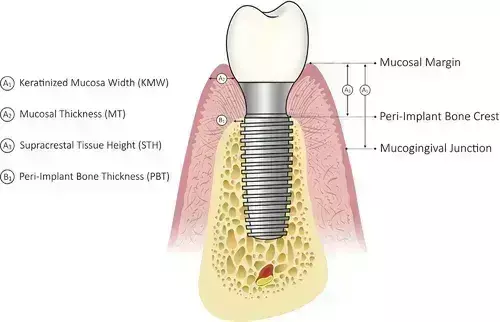- Home
- Medical news & Guidelines
- Anesthesiology
- Cardiology and CTVS
- Critical Care
- Dentistry
- Dermatology
- Diabetes and Endocrinology
- ENT
- Gastroenterology
- Medicine
- Nephrology
- Neurology
- Obstretics-Gynaecology
- Oncology
- Ophthalmology
- Orthopaedics
- Pediatrics-Neonatology
- Psychiatry
- Pulmonology
- Radiology
- Surgery
- Urology
- Laboratory Medicine
- Diet
- Nursing
- Paramedical
- Physiotherapy
- Health news
- Fact Check
- Bone Health Fact Check
- Brain Health Fact Check
- Cancer Related Fact Check
- Child Care Fact Check
- Dental and oral health fact check
- Diabetes and metabolic health fact check
- Diet and Nutrition Fact Check
- Eye and ENT Care Fact Check
- Fitness fact check
- Gut health fact check
- Heart health fact check
- Kidney health fact check
- Medical education fact check
- Men's health fact check
- Respiratory fact check
- Skin and hair care fact check
- Vaccine and Immunization fact check
- Women's health fact check
- AYUSH
- State News
- Andaman and Nicobar Islands
- Andhra Pradesh
- Arunachal Pradesh
- Assam
- Bihar
- Chandigarh
- Chattisgarh
- Dadra and Nagar Haveli
- Daman and Diu
- Delhi
- Goa
- Gujarat
- Haryana
- Himachal Pradesh
- Jammu & Kashmir
- Jharkhand
- Karnataka
- Kerala
- Ladakh
- Lakshadweep
- Madhya Pradesh
- Maharashtra
- Manipur
- Meghalaya
- Mizoram
- Nagaland
- Odisha
- Puducherry
- Punjab
- Rajasthan
- Sikkim
- Tamil Nadu
- Telangana
- Tripura
- Uttar Pradesh
- Uttrakhand
- West Bengal
- Medical Education
- Industry
Keratinized mucosal width, supracrestal tissue height and dental implant diameter may influence peri-implant marginal bone loss

Keratinized mucosal width, supracrestal tissue height and implant diameter may influence peri-implant marginal bone loss suggests a new study published in the Clinical Implant Dentistry and Related Research.
There is evidence that the apico-coronal implant position and the mucosal phenotype can affect the extent of peri-implant bone loss. This clinical trial analyzes the bone remodeling and marginal bone loss that occur around conical-connection implants placed equicrestally and subcrestally, assessing the effect of the peri-implant soft-tissue phenotype. Fifty-one patients received 56 implants of distinct diameters (3.5 mm Ø n = 6; 4.3 mm Ø n = 41; 5 mm Ø n = 9) in the posterior part of the maxilla or mandible. The implants were placed equicrestally, 1 mm subcrestally and >1 mm subcrestally, depending on the initial supracrestal tissue height (STH). After 3 months of non-submerged healing, single metal-ceramic screw-retained implant-supported crowns were placed. Longitudinal measurements of STH, mucosal thickness and keratinized mucosa width (KMW) were made at the time of implant placement (T0), crown placement (T1), and after 3 (T2) and 6 months (T3) of prosthetic loading. At each of these points, a radiographic evaluation of bone remodeling and marginal bone loss was also performed.
Results: STH was significantly greater for implants placed >1 mm subcrestally than for those placed 1 mm subcrestally. After 12 months of follow-up, a very significant (p < 0.001) loss of KMW was observed, in addition to a marginal bone loss of 0.08 ± 0.1, 0.15 ± 0.2, and 0.14 ± 0.2 mm in the groups placed equicrestally, 1 mm subcrestally and >1 mm subcrestally, respectively. After the multiple linear regression, marginal bone loss was found to depend primarily on KMW (β = −0.43), while also being affected by STH (β = 0.32) and implant diameter (β = −0.28). Marginal bone loss may be influenced by the position with respect to the bone crest, as well as the KMW, STH, and implant diameter. However, more well-controlled studies are needed to verify these above-mentioned findings with different implant designs and connections.
Reference:
Quispe-López N, Gómez-Polo C, Zubizarreta-Macho Á, Montero J. How do the dimensions of peri-implant mucosa affect marginal bone loss in equicrestal and subcrestal position of implants? A 1-year clinical trial. Clin Implant Dent Relat Res. 2024; 1-15. doi:10.1111/cid.13306
Keywords:
Keratinized mucosal width, supracrestal tissue height, implant diameter, peri-implant , marginal bone loss, Quispe-López N, Gómez-Polo C, Zubizarreta-Macho Á, Montero J
Dr. Shravani Dali has completed her BDS from Pravara institute of medical sciences, loni. Following which she extensively worked in the healthcare sector for 2+ years. She has been actively involved in writing blogs in field of health and wellness. Currently she is pursuing her Masters of public health-health administration from Tata institute of social sciences. She can be contacted at editorial@medicaldialogues.in.
Dr Kamal Kant Kohli-MBBS, DTCD- a chest specialist with more than 30 years of practice and a flair for writing clinical articles, Dr Kamal Kant Kohli joined Medical Dialogues as a Chief Editor of Medical News. Besides writing articles, as an editor, he proofreads and verifies all the medical content published on Medical Dialogues including those coming from journals, studies,medical conferences,guidelines etc. Email: drkohli@medicaldialogues.in. Contact no. 011-43720751


